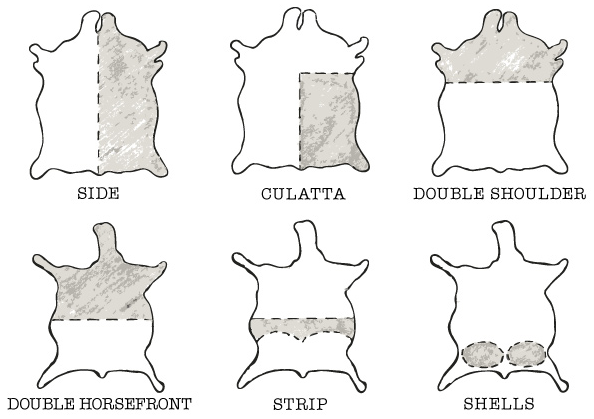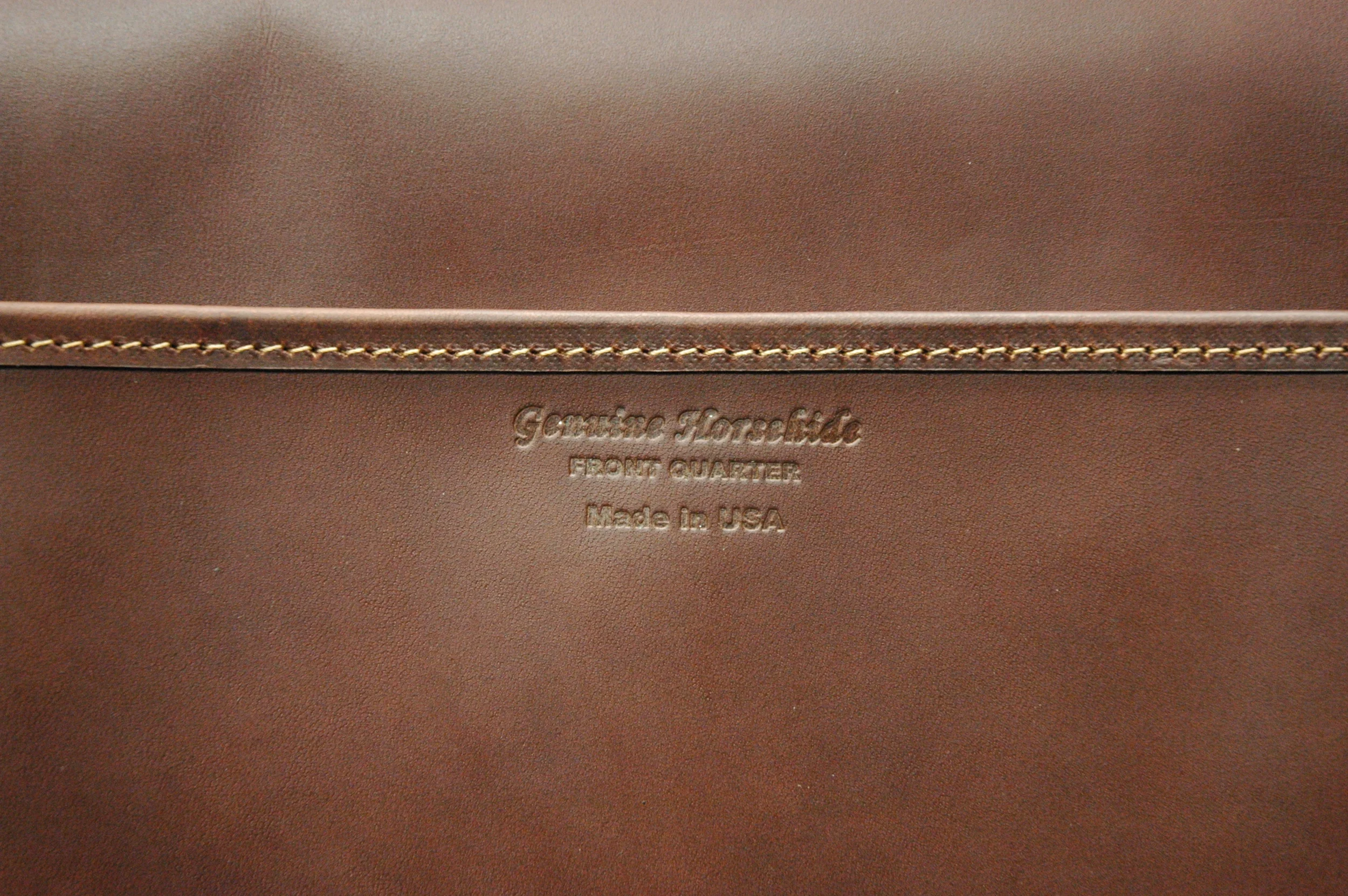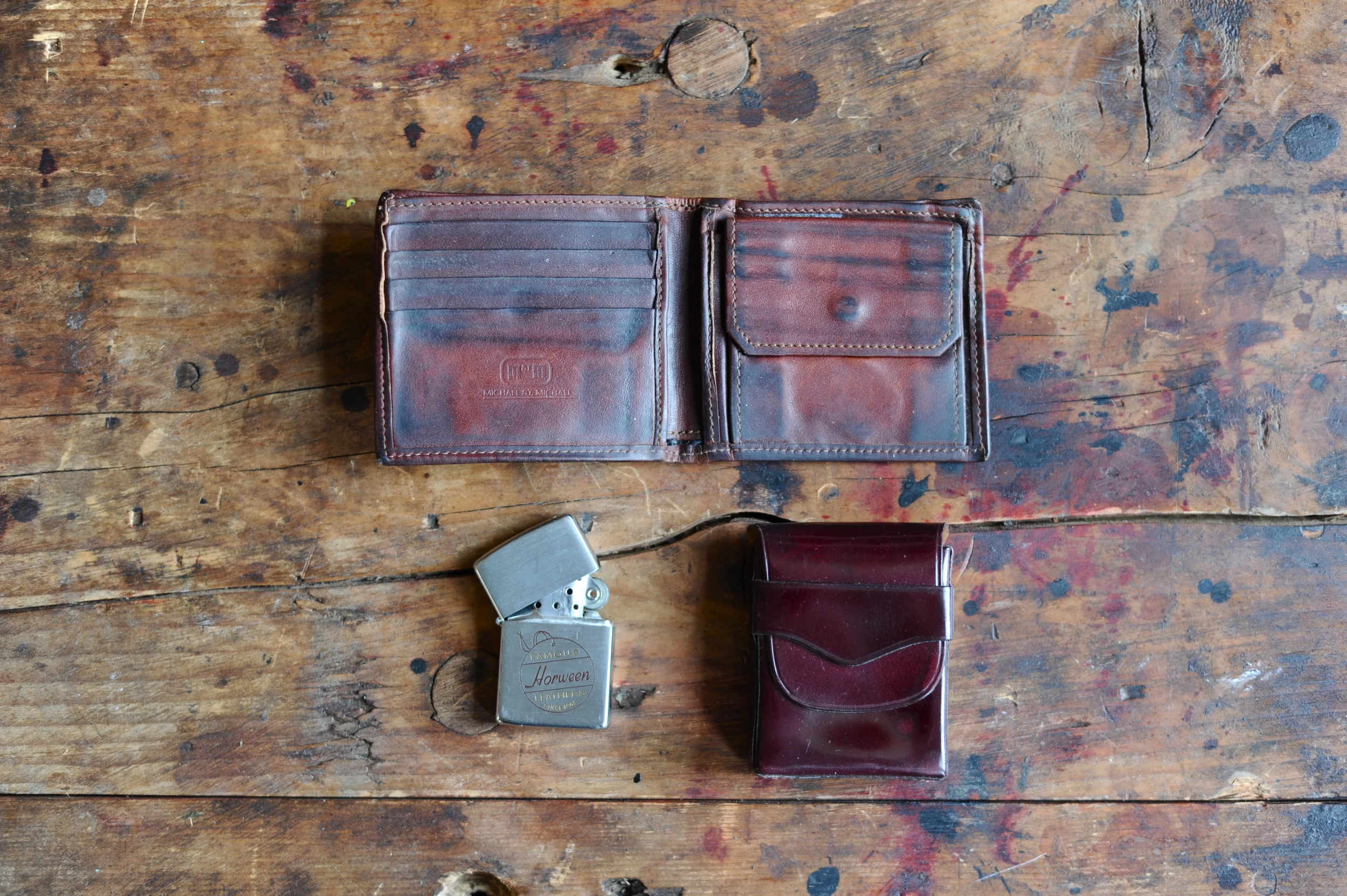By Request - What's the Difference?
In a post a while back I asked if there were any topics that anyone wanted some more information on. Jason and Chris specifically commented that they wanted to hear more about Aero and/or their horsehide jackets. I'm going to try to deliver info on what seems to be a major distinguishing factor for many people in terms of leather jackets - horsehide or cowhide? This is also an appropriate time to explain the differences between the other types of hides that we process.
The majority of what we run here is cowhide. When I say cowhide, it almost always means steerhide for us, since we're typically buying the heaviest (thickest) hides that are available. There are a number of distinctions you can make when purchasing bovine hides in their perishable state:
- Steerhide - most of the cattle raised for foodstuffs are steers. Bulls are made into steers for ranching.
- Bullhide - these tend to be larger and heavier hides, with heavily wrinkled shoulders.
- Cowhide - these hides are lighter in weight and have "looser" bellies (that is, a more spongy fiber structure that has more stretch). These hides tend to have more natural markings to them (healed scratches, bug bites, etc.) since cows live longer than their steer counterparts.
- Heifer - this is a cow that hasn't produced any calves, thus the bellies of the hide tend to be heavier than on a cow that has had offspring.
Even within these classifications there are further categories. Heavy Native Steers (HNS) and Butt Branded Steers (BBS) are the hides that we purchase, and these hides are sold and graded based on an average weight. The primary difference between HNS and a BBS are the number of brands in the lot. HNS lots must hit a predetermined average weight and include 5% or less branded hides. This is generally considered to be the best available hide, and there are many other possible grades other than those mentioned above (but for the what we're working on here this is plenty).
Calf hides, as one might assume, are smaller and lighter in weight (less thick) when compared to steer or cowhide. One major difference between a cow/steerhide and a calfskin is the appearance of the grain, which tends to be finer on calf. I deliberately say "finer" and not "better" because they are just different, and I wouldn't say that one is necessarily better than the other based solely on grain appearance. From a production and yield standpoint, cow/steerhide is always better.
We also run some Bison, which would seem to behave like a cow/steerhide, but it's quite different. The bison hides themselves are much greasier (higher fat content) and tend to have pockets of light weight (thin) areas, especially over the natural hump of the animal's back. The hides also have more natural wrinkles and striations due to the ruggedness of the animal. The bison is raised and lives differently.
When comparing horsehide to cow/steerhide, there are big differences. Horsehide has a coarser grain, huge differences in weight (even across the same hide, and generally is lighter/thinner), is more abrasion resistant, has a different fiber structure, and displays much more variation and natural markings. Cow/steerhide is more versatile in that it is much more consistent in terms of weight and usable area, which means yields are better. Cowhide is also much more readily available.
For us, cow/steerhide is cut and tanned as "sides," and horsehide becomes three separate products. The horsefront, the strip, and the shells. The strip and the shells are pure vegetable pit tannages, and the horsefront can be tanned either with or without chrome - note: horsefront a.k.a. front quarter horsehide (FQHH), double horsefront (DHF), and single horsefront (SHF). The strip (a.k.a. bark strip, russet horsehide strip, natural horsebutt strip, north of cordovan, and others) is thick relative to the front, and typically ranges from 4 - 10 oz, or 1.6 mm to 4 mm. This is great leather, though it's a little funky to work with due to the shape. The fronts have traditionally been used for jackets because they are tough and thin, making them great for the application. Lightweight, meaning thin, cowhide, though, also makes beautiful jackets.
In the closeup above, the difference in grain appearance is very noticeable. The shell has no grain, the strip in the center has very pronounced and coarse grain, and the two steerhide examples have very fine, but still very pronounced grain. These are all full grain products.
The question that really inspired this post was essentially, does horsehide make the best jackets? The answer is in the eye of the beholder. I would only say that it makes a different jacket, just like it makes up into a different shoe when compared to other leather options. Certain hides and certain tanning processes lend themselves well to certain end uses, with the type and formulation of the tannage often being the most significant factor.









